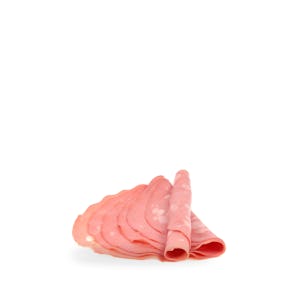




Pancetta
Creamy Fat-Rich Goodness
TASTING NOTES FROM THE CURATOR
This cured meat gets nearly all its flavor from the brining process, with an addition of choice aromatic herbs and spices, the most commonly used of which are black pepper, nutmeg, cinnamon, and cloves. At this point, the meat is allowed to cure naturally over a period of a few days to a few weeks. Sometimes, it is smoked after the curing process instead. It has a clean, assertively porky taste with a sweetness not naturally found in commercially produced American bacon.
There are two types of Pancetta being offered by The Bow Tie Duck:
-
Pancetta Arrotolata is rolled, trussed and cured until just firm. The slices look circular in shape.
-
Pancetta Tesa is flat, dried in its natural shape until it is so firm and dry that it can be eaten raw like prosciutto. The are sliced in strips.
PREPARATION OR PAIRINGS
Though it can be eaten raw as part of a charcuterie board—it is lovely with goat cheese, Montasio, or Parmigiano Reggiano—it gains a more intense flavor when cooked. It is also seen as an alternative meat to be used for Italian cabonara, if and only if, guanciale is not available. (Guanciale still being the most preferred meat of choice for this sacred Italian classic dish.)
Other recipes to consider for this pancetta are: Taglatelle al ragu, Paninis, Pasta with Asparagus and Pancetta, Avocado with egg and Pancetta slices, and tomato based dishes that require smoky, flavorful meat.
Pancetta goes beautifully with a dark stout beer. For wine parings, recommended are wines with the Sangiovese grape, a widely planted grape in Italy and key variety in Tuscany’s renowed Chianti. The high acidity of Sangiovese matches well with all manner of well-spiced foods, such as this Pancetta. It also contains moderate tannin to match the fat of the pork.
THE ITALIAN BACON
Cured meats have saved many sailors on long voyages. That the first records of pancetta appeared on shipping manifests in the 15th century attests to this fact. Many kinds of pancetta are made in different regions of Italy, but the most famous are the DOP-protected varieties from Calabria and Piacentina. Some people might confuse pancetta with prosciutto, especially when they’re both cut in thin slices and sold pre-packed at a deli counter. But prosciutto is best considered the Italian ham, coming from nice, rounded haunches, while the pancetta, fatty and rich belly meat, is most decidedly the Italian bacon.
Storage Instructions
Vacuum-sealed packs of hand-carved cured meats can last up to five months in the refrigerator (never the freezer). Once the pack is opened, they’re best enjoyed within the day.









